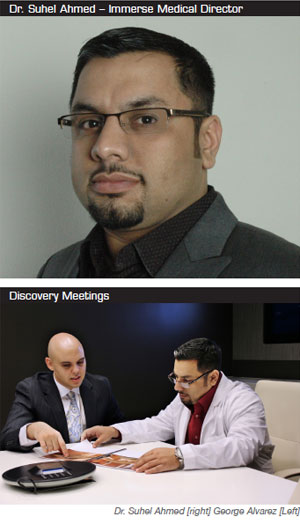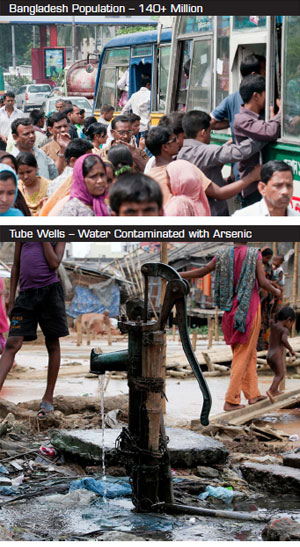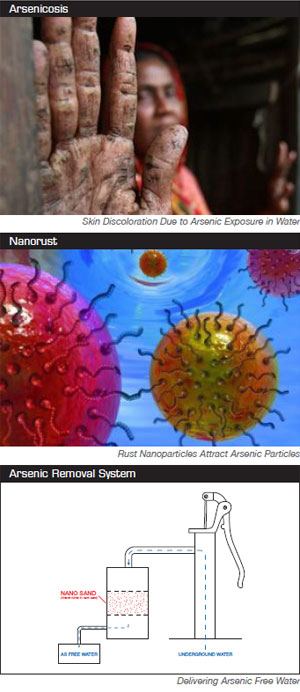
IMMERSE MEDICAL
Introduction
Immerse Global is a clean-water technology firm in partnership with Stanford University. The firm focuses on water generation, filtration, and medical technologies. The company has created a medical division and medical board representing leaders in different medical specialties as diverse as Nephrology, Infectious Disease, and Urology.
The group represents a broad section of the clinical community with multidisciplinary backgrounds which will advise Immerse Global regarding their current portfolio, with a specific focus on new and emerging technologies, as well as future clinical trends.
Dr. Suhel Ahmed is the Director of Immerse Medical—Immerse Global’s Medical Board. A board certified internist, Dr. Ahmed has a passion for research and development, with a focus on Nanotechnology-photodynamic therapeutic agents. This experience has given him a unique vantage point to drive medical discovery and innovation for Immerse Medical.

ARSENIC REMOVAL– BANGLADESH
Arsenic Threat
Arsenic-poisoned drinking water is a global problem, affecting tens of millions of people in Asia, Africa, North America, South America, and Europe. Up to half of Bangladesh’s population of approximately 140 million people is chronically exposed to arsenic through drinking water.
Long-term exposure, even to low levels of arsenic, through drinking water increases the mortality rate for a variety of diseases. Chronic exposure to arsenic is linked with cancers of the liver, kidney, bladders, and skin, as well as heart disease. One in five deaths in Bangladesh could be attributed to drinking well water contaminated with the substance.
The issue surfaced about two decades ago, after some 10 million shallow hand-pump wells were installed across the country in the 1970s with money from international donors. The wells were meant to provide clean drinking water to help prevent deadly waterborne diseases, such as cholera, but they unintentionally tapped into arsenic deposits in the ground, releasing the odorless, colorless, and tasteless toxin into water used for drinking and cooking.
The World Health Organization has called it “the largest mass poisoning of a population in history,” as countless new wells continue to be dug here daily without testing the water for toxins.

Arsenic Removal System
Dr. Suhel Ahmed and George Alvarez, CEO of Immerse Global have designed an Arsenic Removal System in collaboration with Scott Fendorf, Professor of Soil and Environmental Biogeochemistry at Stanford University and Dr. Vicki Colvin, Director of Rice University, Center for Biological and Environmental Nanotechnology (CBEN).
Fendorf’s research explores the chemical and biological processes that govern the fate and transport (and thus cycling) of contaminants (such as arsenic) and nutrients (such as phosphate) within soils, sediments, and surface waters. Dr. Colvin has developed a revolutionary, low-cost technology for removing arsenic from drinking water called Nanorust.
The arsenic-removing technology is based on the unique properties of particles called nanorust: tiny bits of iron oxide that are smaller than living cells. In 2006, initial tests indicated nanorust—which naturally binds with arsenic—could be used as a low-cost means of removing arsenic from water. The Arsenic Removal System uses the magnetic properties of nanorust to bind arsenic particles in water delivery applications. The system is designed to attach to existing tube well infrastructure in Bangladesh and deliver arsenic free water on demand.
“Nanorust filters may help remove water-borne viruses that are responsible for a wide variety of gastrointestinal diseases.” — Pedro Alverez, Rice University.
